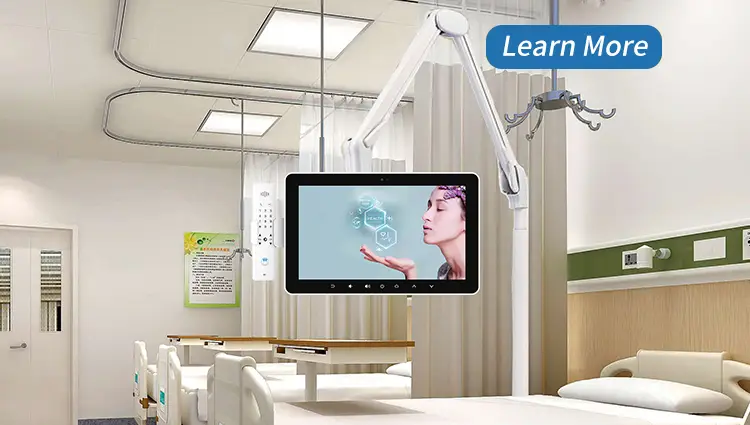- Why Medical Touch Screens Are Non-Negotiable in Modern Healthcare
- What Makes a Medical Display "Medical Grade"?
- Decoding the Jargon: Keywords You Need to Know
- What Influences Medical Touch Screen Displays Price?
- Finding the Best Medical Touch Screen Displays for Your Needs
- The Future is Touch: Innovations in Medical Displays
- Final Thoughts: Making an Informed Decision
Ever wondered what goes into those sleek, responsive screens doctors and nurses use every day? It’s far more than just a fancy monitor. We’re talking about medical touch screen displays ŌĆō specialized technology built for the demanding, high-stakes environment of healthcare. From operating rooms to patient bedsides, these displays are transforming how medical professionals work, offering precision, efficiency, and ultimately, better patient care.
If you’re looking to understand the ins and outs of this crucial technology, whether you’re a healthcare professional, an IT specialist, or just curious, you’ve come to the right place. We’ll demystify everything from Medical touch screen displays price to the nuances of a Medical grade monitor vs regular monitor, ensuring you have all the information you need.
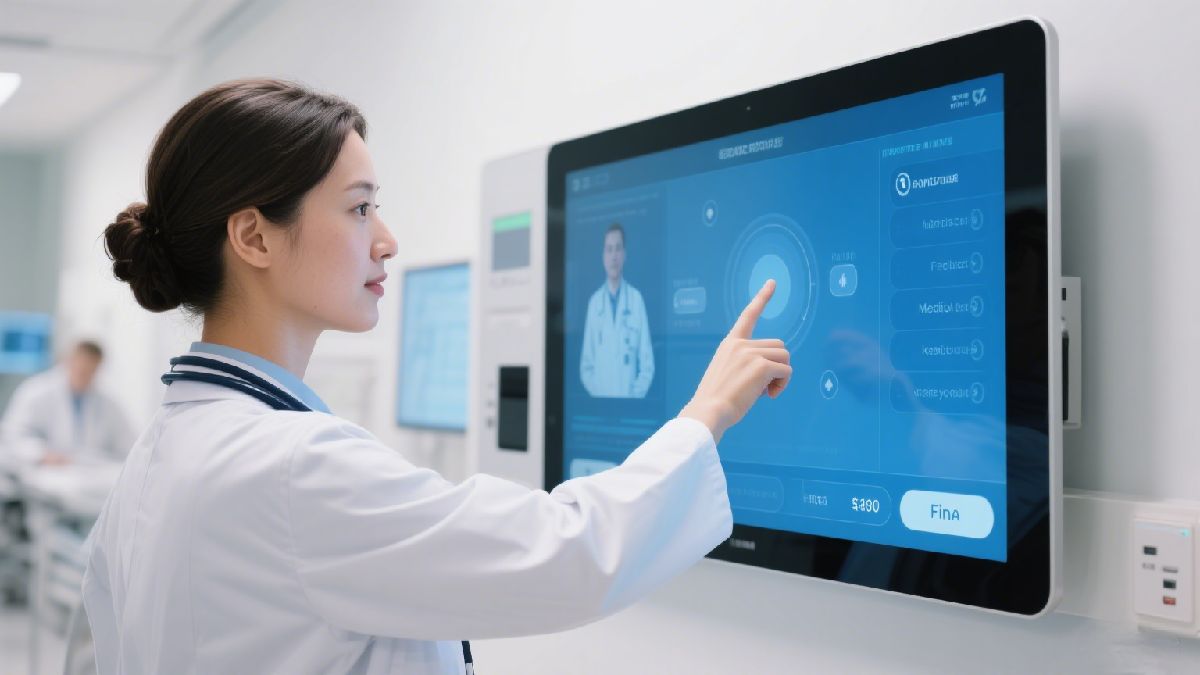
Why Medical Touch Screens Are Non-Negotiable in Modern Healthcare
Think about the fast-paced nature of a hospital. Every second counts, and accuracy is paramount. This is where medical touch screen displays truly shine. They’re not just about looking futuristic; they’re about functionality, hygiene, and reliability.
Imagine a surgeon in the middle of a complex procedure needing to access patient data or adjust imaging. Fumbling with a mouse and keyboard isn’t an option. A multi-touch display allows for quick, intuitive interaction, often even with gloved hands. This isn’t just convenient; it’s a matter of patient safety.
Beyond the operating room, these displays are integral in:
- Diagnostic Imaging: Viewing X-rays, MRIs, and CT scans with crystal-clear precision, often on Medical Grade Touchscreen Monitor for accurate grayscale reproduction.
- Electronic Health Records (EHR): Quickly updating and accessing patient information at the point of care.
- Patient Monitoring: Displaying vital signs and alerts in real-time.
- Telemedicine: Facilitating remote consultations with high-definition video and interactive controls.
- Pharmacy and Lab Operations: Streamlining workflows and reducing errors.
The demand for these specialized displays is growing, and understanding their unique features and benefits is key.
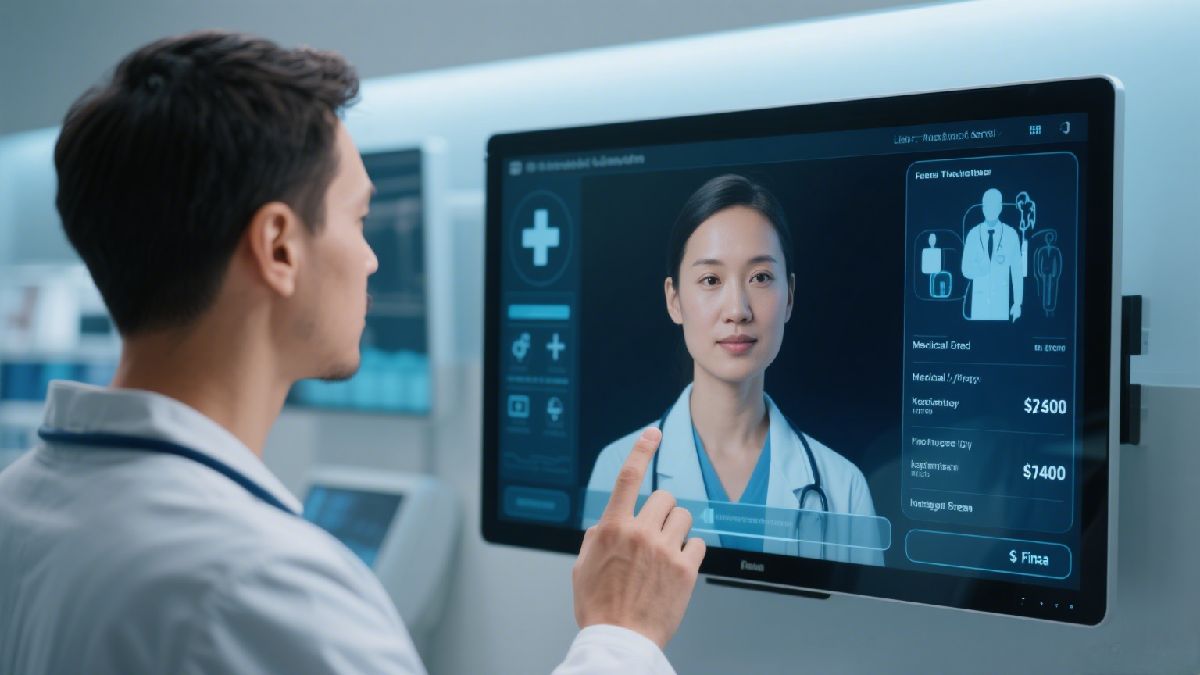
What Makes a Medical Display “Medical Grade”?
This is a critical distinction. You might see a great deal on a consumer touchscreen, but it simply won’t cut it in a medical setting. So, what sets Medical Grade Touch Screen Monitor apart from your everyday screen?
1. Built for Hygiene
Hospitals are breeding grounds for germs. Medical Touch Screen Display Solutions are designed with smooth, often bezel-free surfaces that are easy to clean and disinfect thoroughly with harsh chemical agents, without damaging the screen. This is a stark contrast to consumer monitors with nooks and crannies that can harbor bacteria.
2. Durability and Reliability
Medical environments are tough. These displays are built to withstand spills, bumps, and continuous operation for extended periods. They often feature robust enclosures and industrial-grade components, ensuring consistent performance when it matters most.
3. Electrical Safety (IEC 60601-1 Compliance)
This is perhaps the most crucial difference. Medical Displays must comply with stringent electrical safety standards, particularly IEC 60601-1. This standard ensures that the equipment is safe for both patients and operators, preventing electrical shock and interference with other medical devices. A Medical Grade Monitor price often reflects the extensive testing and certifications required to meet these rigorous standards.
4. Image Quality and Calibration
For diagnostics, color accuracy and consistent grayscale representation are paramount. Medical-Grade Touchscreens often support (Digital Imaging and Communications in Medicine) Part 14, which ensures accurate and consistent display of medical images. This means that an X-ray viewed on one Medical Touch Screen Displays will look the same on another, which is vital for accurate diagnosis.
5. Specialized Features
- Fanless Design: Many medical displays are fanless to prevent the circulation of dust and pathogens, and to ensure quiet operation in sensitive areas.
- Gloves Operation: Touchscreens are often designed to be highly responsive even when operated with medical gloves.
- Wide Viewing Angles: Essential for multiple medical professionals to view the screen clearly from various positions.
- Customizable Bezels and Mounting Options: Allowing for seamless integration into various medical carts, walls, and equipment.
This deep dive into “medical grade” answers why a Medical grade monitor vs regular monitor isn’t even a competition in healthcare settings.
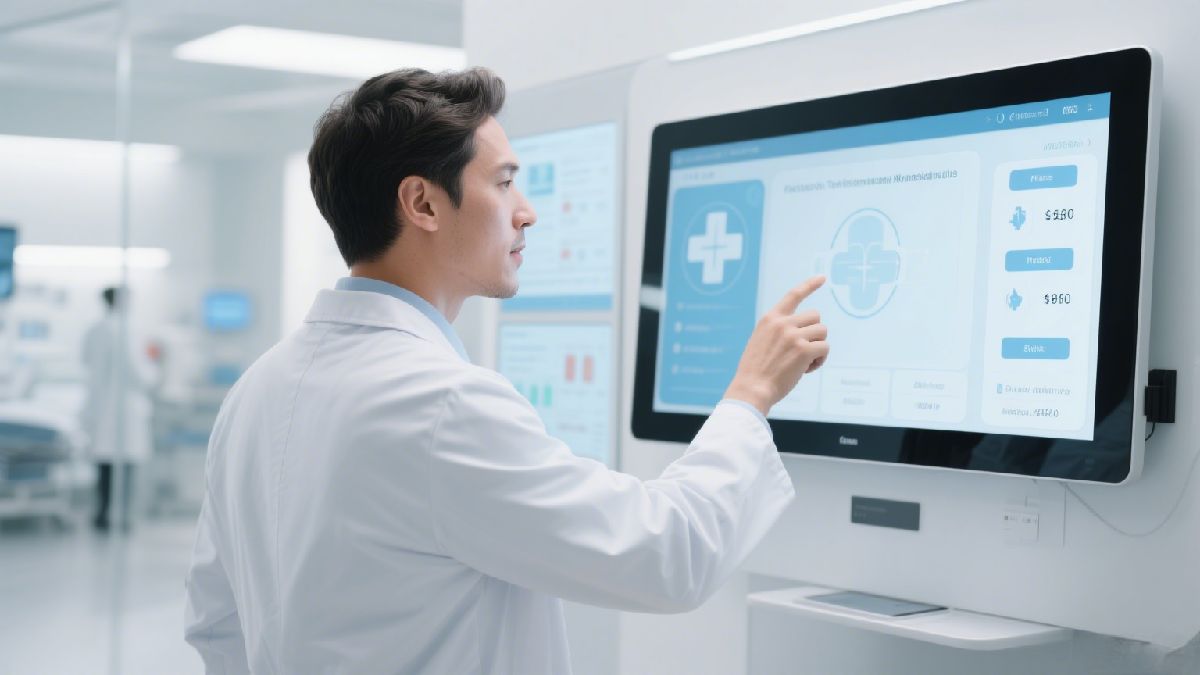
Decoding the Jargon: Keywords You Need to Know
When researching Medical and Healthcare Touchmonitors, you’ll encounter a variety of terms. Let’s break down some common ones:
- Medical Panel PCs: These are all-in-one solutions, combining a medical-grade display with an integrated computer. They are ideal for space-saving and streamlined workflows in operating rooms, ICUs, and patient rooms. You’ll often see them referred to as Medical-Grade Touch Screen Monitors & Medical Panel PCs.
- Touchscreen Monitor Displays: This is a broad term, but in a medical context, it specifically refers to the robust, responsive, and hygienic displays we’ve been discussing.
- DICOM: Stands for Digital Imaging and Communications in Medicine. It’s the standard for handling, storing, printing, and transmitting information in medical imaging. A DICOM Medical Grade Touchscreen Monitor ensures optimal image fidelity for diagnostics.
- Multi-touch display: A screen that can register two or more points of contact simultaneously, allowing for gestures like pinching to zoom or rotating images, which is incredibly useful for navigating medical images and records.
- Touchscreen monitor sizes: These vary widely to suit different applications. You’ll find everything from compact screens for patient bedside use to larger 36 touch screen monitor units for collaborative viewing in conference rooms or operating theaters.
- Best medical touch screen displays: This is subjective and depends on your specific needs, but generally refers to models offering the highest standards of durability, hygiene, image quality, and compliance.
Understanding these terms will empower you to make informed decisions when sourcing Medical Touch Screen Displays.
What Influences Medical Touch Screen Displays Price?
The cost of Medical touch screen displays can vary significantly. Here’s a breakdown of the factors that play a role:
- Size and Resolution: Larger displays with higher resolutions (e.g., 4K) will naturally cost more.
- Medical Grade Certifications: The extensive testing and compliance with standards like IEC 60601-1 add to the cost. This is a significant differentiator from consumer monitors.
- Advanced Features: Features like anti-glare coatings, specialized touch technologies (e.g., projected capacitive for multi-touch and glove operation), and integrated cameras or speakers can increase the price.
- Durability and Materials: Robust enclosures, antimicrobial coatings, and industrial-grade components designed for longevity contribute to the cost.
- Brand and Warranty: Reputable brands with strong warranties often have higher price points, but also offer greater peace of mind and support.
- Touchscreen Monitor Displays with specialized functionalities, such as those optimized for surgical environments or specific diagnostic tools, will also be at the higher end of the spectrum.
- Medical Grade Monitor price will always be higher than a regular monitor due to the stringent requirements and specialized components.
It’s important to remember that investing in quality Medical touch screen displays is an investment in patient safety, operational efficiency, and long-term reliability. Cutting corners here can lead to significant issues down the line.
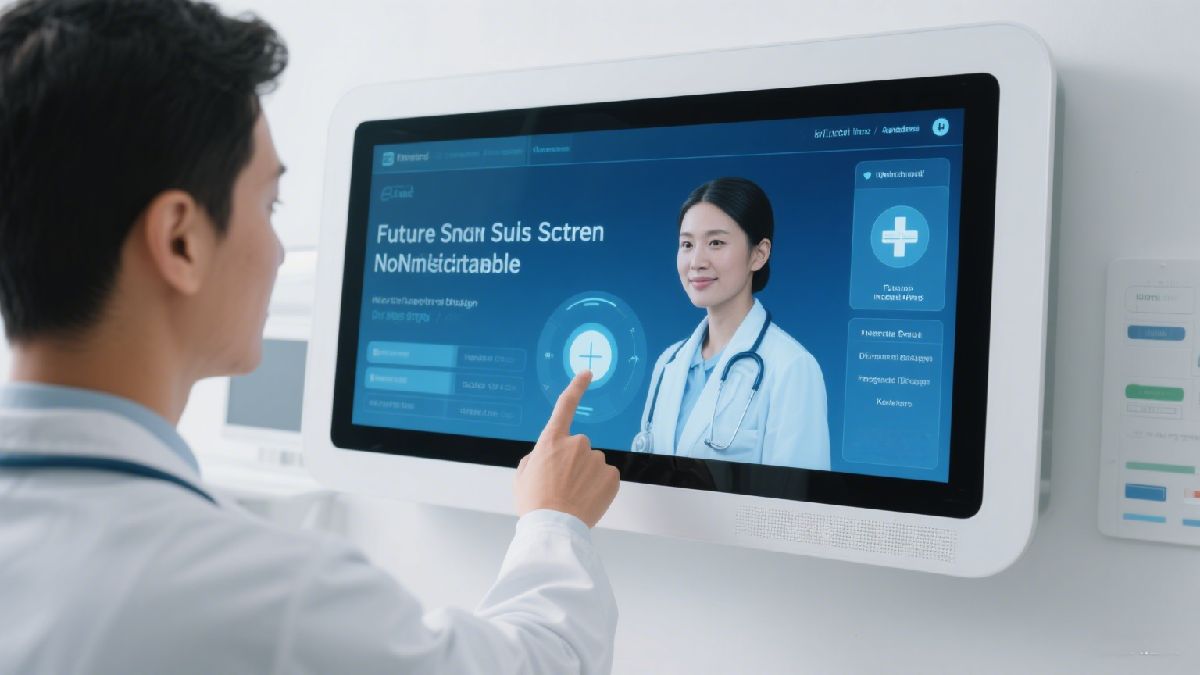
Finding the Best Medical Touch Screen Displays for Your Needs
With so many options, how do you choose the Best medical touch screen displays?
- Identify Your Application: Is it for an operating room, an ICU, a patient room, or a diagnostic lab? The environment and specific use case will dictate the required features.
- Determine Size and Mounting: What Touchscreen monitor sizes are appropriate for your space? Do you need VESA mounting for arms or carts?
- Prioritize Features: Do you need a Multi-touch display? Is DICOM compliance critical? Do you require a fanless design?
- Check Certifications: Always ensure the display meets relevant medical safety standards (e.g., IEC 60601-1).
- Consider Durability and Hygiene: Look for displays designed for easy cleaning and resistance to common medical disinfectants.
- Read Reviews and Manuals: Before purchasing, it’s wise to consult a Medical touch screen displays manual for detailed specifications and operational guidelines. This will give you a deeper understanding of the product’s capabilities and limitations.
- Compare Medical Display Monitors: Look at various manufacturers and models. Don’t just focus on the upfront Medical Grade Monitor price, but also consider the total cost of ownership, including reliability and potential maintenance.
The Future is Touch: Innovations in Medical Displays
The field of Medical Displays is constantly evolving. We’re seeing trends towards:
- Larger, Higher-Resolution Displays: Offering more screen real estate for complex data and imagery.
- Enhanced Touch Sensitivity: Even more precise and responsive touch for intricate tasks.
- Integration with AI and AR: Future displays may incorporate augmented reality overlays for surgical guidance or AI-powered diagnostics.
- Improved Connectivity: Seamless integration with hospital networks and other medical devices.
- Remote Management and Monitoring: Allowing IT teams to manage and troubleshoot displays from a central location, optimizing uptime.
These advancements underscore the growing importance of Medical Touch Screen Display Solutions in delivering cutting-edge healthcare.
Final Thoughts: Making an Informed Decision
Choosing the right Medical Grade Touch Screen Monitor is a critical decision that impacts workflow, efficiency, and ultimately, patient outcomes. By understanding the unique requirements of medical-grade technology, the factors influencing Medical touch screen displays price, and the various features available, you can make an informed choice that meets the rigorous demands of your healthcare environment.
Whether you’re looking for the Best medical touch screen displays for a new facility or upgrading existing equipment, prioritizing safety, durability, and performance will always lead to the best long-term solution.

